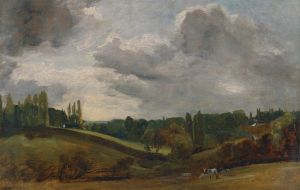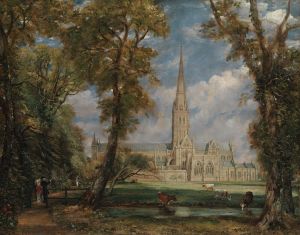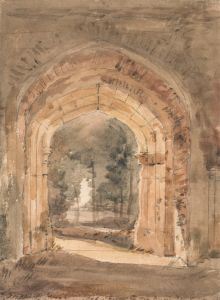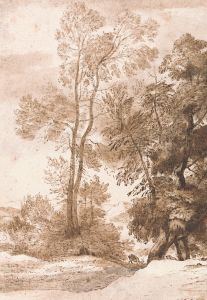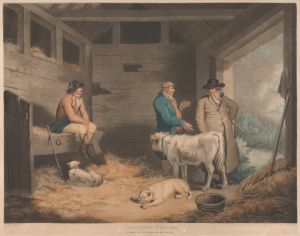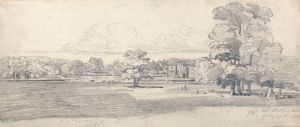
Hampstead Heath
A hand-painted replica of John Constable’s masterpiece Hampstead Heath, meticulously crafted by professional artists to capture the true essence of the original. Each piece is created with museum-quality canvas and rare mineral pigments, carefully painted by experienced artists with delicate brushstrokes and rich, layered colors to perfectly recreate the texture of the original artwork. Unlike machine-printed reproductions, this hand-painted version brings the painting to life, infused with the artist’s emotions and skill in every stroke. Whether for personal collection or home decoration, it instantly elevates the artistic atmosphere of any space.
John Constable's painting Hampstead Heath is a work by the renowned English Romantic painter, celebrated for his evocative landscapes that often depict the English countryside. Constable, born in 1776 in East Bergholt, Suffolk, is best known for his dedication to capturing the natural beauty of rural England, and his works frequently reflect his deep connection to the landscapes he painted.
Hampstead Heath is one of several works Constable created that depict the area of Hampstead, a region in North London where the artist spent significant time during his later years. Constable moved to Hampstead with his family in 1819, seeking a healthier environment for his wife, Maria, who suffered from tuberculosis. The heath, with its open skies, rolling terrain, and natural beauty, became a source of inspiration for many of his sketches and paintings.
The painting exemplifies Constable's characteristic style, which often emphasized the interplay of light, atmosphere, and weather. He was particularly interested in capturing transient effects, such as the movement of clouds or the changing light of the sky, which are evident in many of his Hampstead works. Constable's approach to painting was innovative for his time, as he often worked outdoors, creating plein air sketches that he later used as references for larger studio works. His studies of the sky, in particular, were groundbreaking and contributed to his reputation as a master of atmospheric effects.
While specific details about the creation date and exact dimensions of Hampstead Heath are not always documented, it is known that Constable produced numerous sketches and paintings of the area during the 1820s. These works often reflect his fascination with the natural environment and his ability to convey a sense of immediacy and realism. Constable's Hampstead scenes, including Hampstead Heath, are considered significant contributions to the Romantic movement in art, which emphasized emotion, nature, and the sublime.
Today, Hampstead Heath and other works by Constable are celebrated for their technical skill and emotional depth. They continue to be studied and admired for their innovative approach to landscape painting and their ability to capture the essence of the English countryside. Constable's works can be found in major art collections and museums worldwide, including the Tate Britain and the Victoria and Albert Museum in London.
This painting, like much of Constable's oeuvre, reflects his belief that art should be rooted in direct observation of nature. His dedication to this principle has earned him a lasting legacy as one of England's greatest landscape painters.









